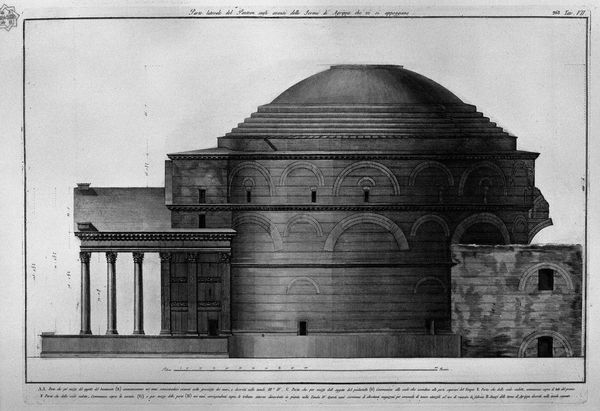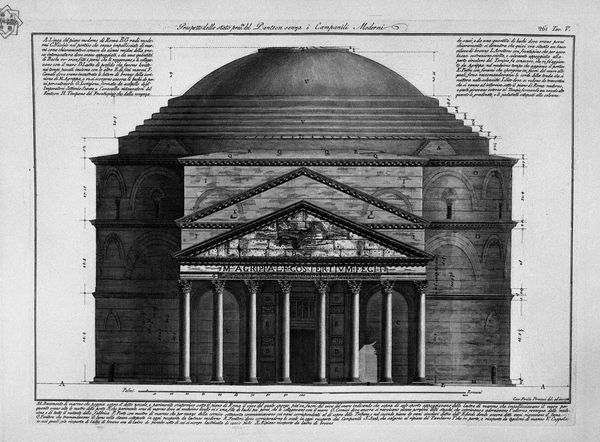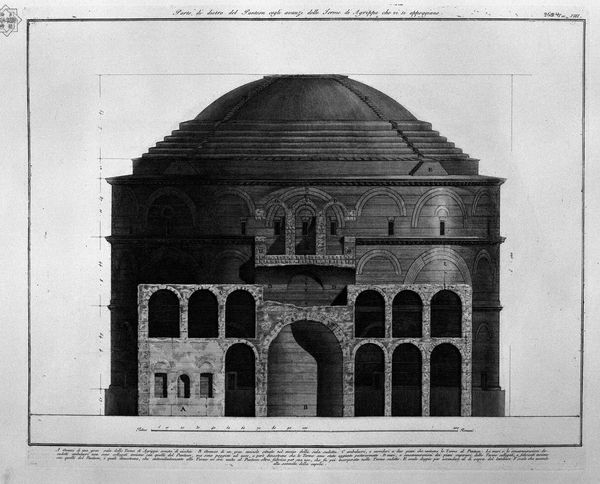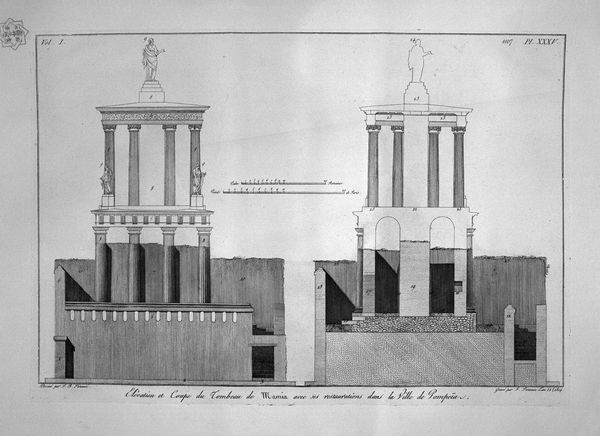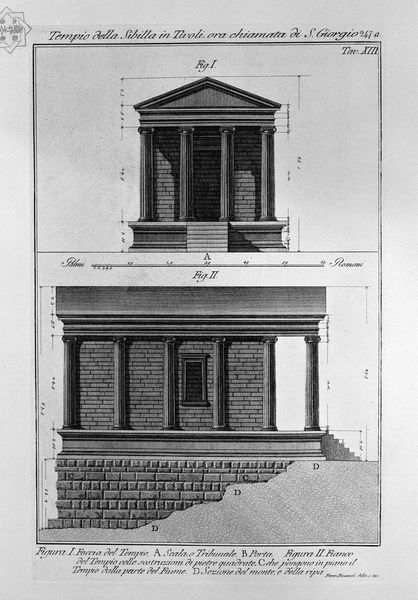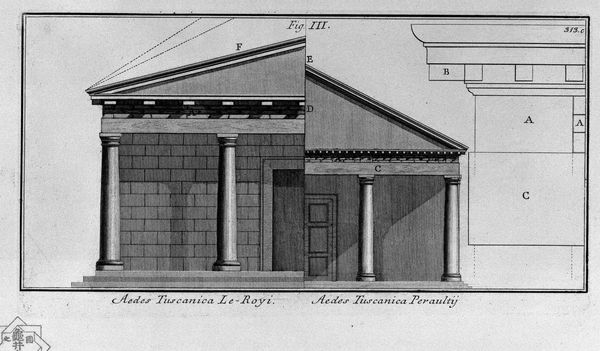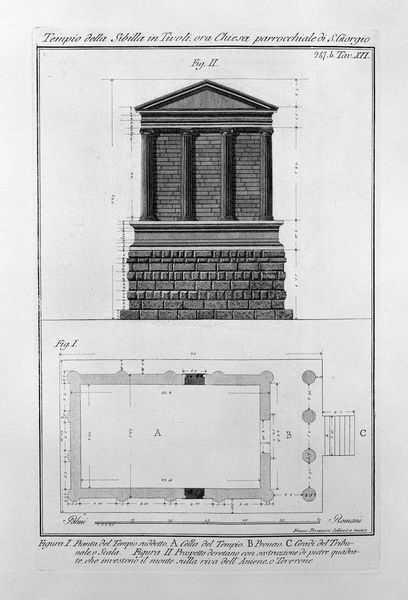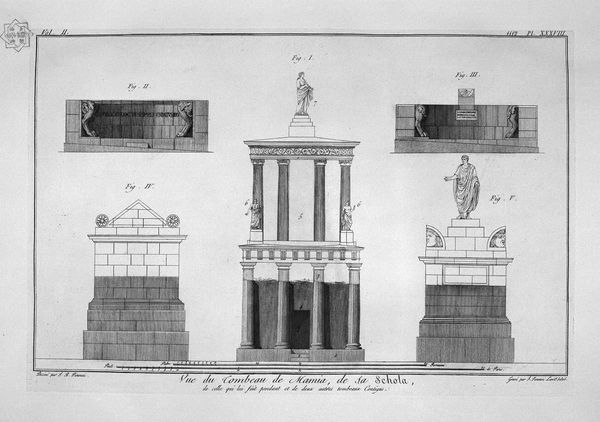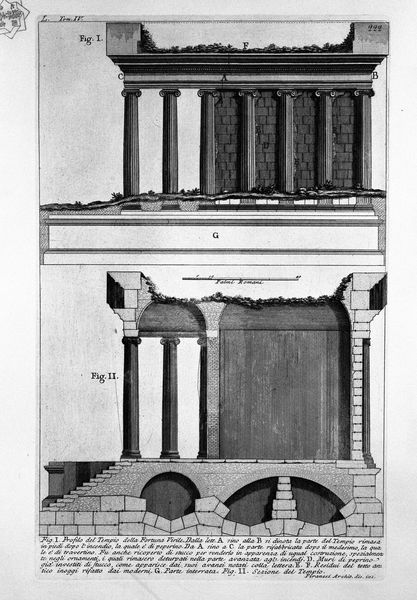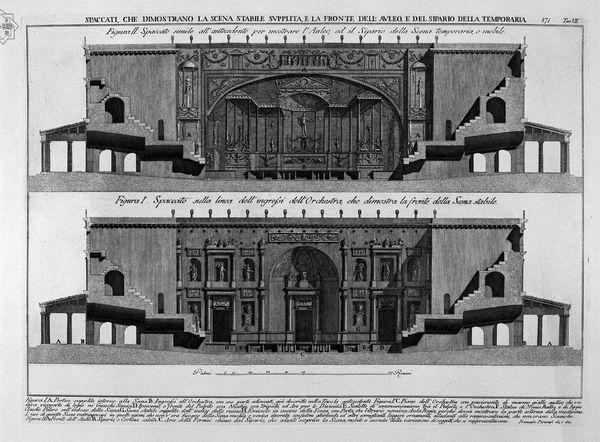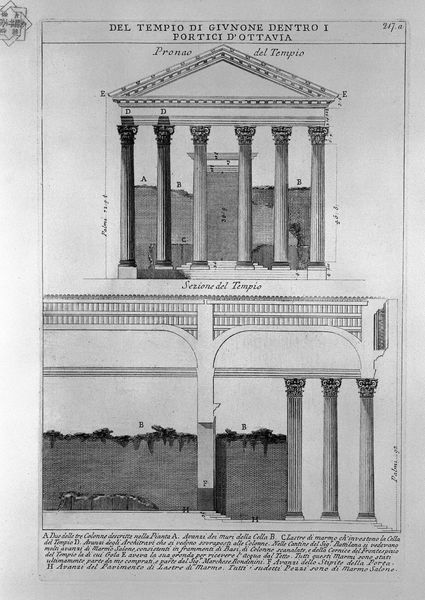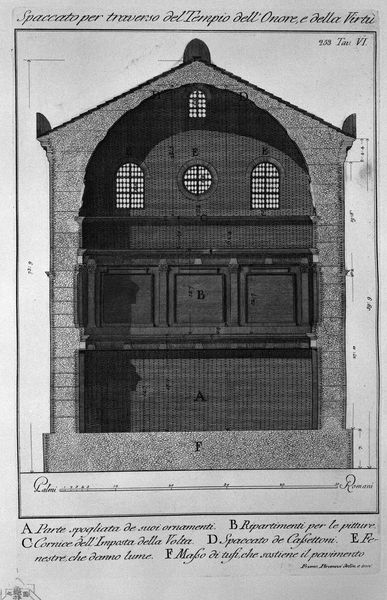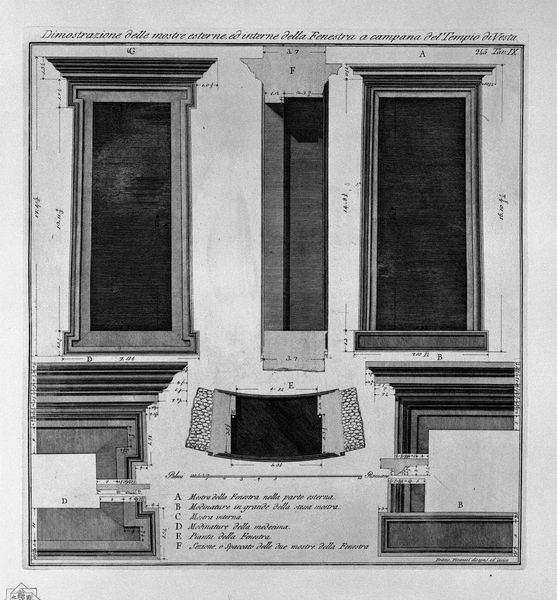
drawing, print, etching, ink, engraving, architecture
#
drawing
#
neoclacissism
# print
#
etching
#
sculpture
#
classical-realism
#
charcoal drawing
#
ink
#
engraving
#
architecture
#
realism
#
statue
Copyright: Public domain
This etching by Giovanni Battista Piranesi depicts the Pantheon, a Roman temple dedicated to all gods. Note the inscription, "M. Agrippa Fecit," attributing its construction to Marcus Agrippa. This reference connects Piranesi's work to the original builders, evoking a sense of historical continuity. Consider the symbolic weight carried by this edifice. The Pantheon's dome, a representation of the celestial sphere, echoes across centuries in various architectural forms. Think of the domes in Renaissance cathedrals, each seeking to capture a sense of divine perfection. The temple, originally a place of pagan worship, was later consecrated as a Christian church. This transformation underscores the cyclical nature of cultural symbols, reflecting how societies adapt and repurpose existing forms to suit new belief systems. Such shifts reveal the subconscious desire to maintain a connection with the past, even as we redefine it. The Pantheon, therefore, stands as a testament to the enduring power of symbols, which continually resurface, evolve, and acquire new layers of meaning.
Comments
No comments
Be the first to comment and join the conversation on the ultimate creative platform.
